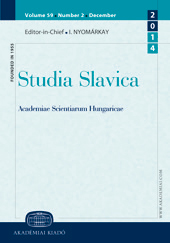Понятие национальной кинематографии – два примера: Словения и Беларусь
The concept of national cinematography is two examples: Slovenia and Belarus
Author(s): Imre SzíjártóSubject(s): Sociology of Culture, Film / Cinema / Cinematography, Sociology of Art
Published by: Akadémiai Kiadó
Keywords: self-identity; cultural self-definition; national film industry; cinema as part of national culture;
Summary/Abstract: My presentation examines the factors which determine the national character of the film industry. Cinema has always been a global phenomenon in the sense that films are marketed internationally and are judged by the international community (awards, festivals, and cultural events). Films employ a universal language and use global generic conventions; this supranational feature is also true for the background institutions of film (production infrastructure, finance, and coproduction). My presentation overviews two national film industries: the Slovenian and the Belarus cinema. The culture of these two countries is situated within a larger political, cultural, and linguistic community, and thus affected by factors and forces associated with the center and the periphery. The film industry in these two countries is shaped by the place of production, the nationality of the director, and language.
Journal: Studia Slavica Academiae Scientiarum Hungaricae
- Issue Year: 58/2013
- Issue No: 1
- Page Range: 175-183
- Page Count: 9
- Language: Russian
- Content File-PDF

